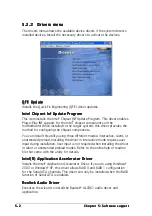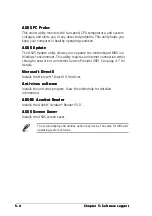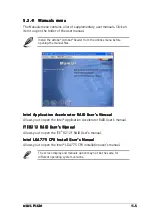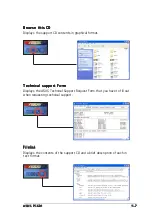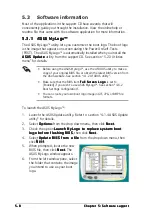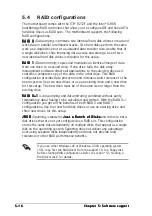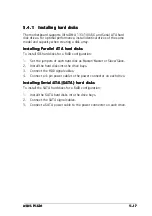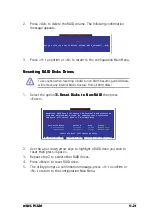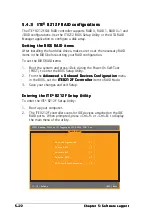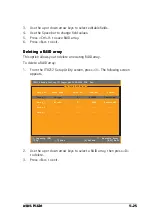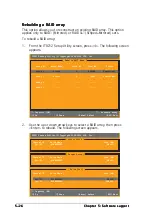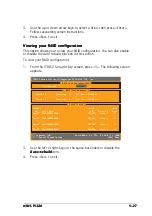
5 - 1 6
5 - 1 6
5 - 1 6
5 - 1 6
5 - 1 6
C h a p t e r 5 : S o f t w a r e s u p p o r t
C h a p t e r 5 : S o f t w a r e s u p p o r t
C h a p t e r 5 : S o f t w a r e s u p p o r t
C h a p t e r 5 : S o f t w a r e s u p p o r t
C h a p t e r 5 : S o f t w a r e s u p p o r t
If you use either Windows
®
XP or Windows
®
2000 operating system
(OS), copy first the RAID driver from the support CD to a floppy disk
before creating RAID configurations. Refer to section “5.5 Creating a
RAID driver disk” for details.
5.4
RAID configurations
The motherboard comes with the ITE
®
8212F and the Intel
®
ICH6R
Southbridge RAID controllers that allow you to configure IDE and Serial ATA
hard disk drives as RAID sets. The motherboard supports the following
RAID configurations.
R A I D 0
R A I D 0
R A I D 0
R A I D 0
R A I D 0
(Data striping)
optimizes two identical hard disk drives to read and
write data in parallel, interleaved stacks. Two hard disks perform the same
work as a single drive but at a sustained data transfer rate, double that of
a single disk alone, thus improving data access and storage. Use of two
new identical hard disk drives is required for this setup.
R A I D 1
R A I D 1
R A I D 1
R A I D 1
R A I D 1
(Data mirroring)
copies and maintains an identical image of data
from one drive to a second drive. If one drive fails, the disk array
management software directs all applications to the surviving drive as it
contains a complete copy of the data in the other drive. This RAID
configuration provides data protection and increases fault tolerance to the
entire system. Use two new drives or use an existing drive and a new drive
for this setup. The new drive must be of the same size or larger than the
existing drive.
R A I D 0 + 1
R A I D 0 + 1
R A I D 0 + 1
R A I D 0 + 1
R A I D 0 + 1 is
data striping
and
data mirroring
combined without parity
(redundancy data) having to be calculated and written. With the RAID 0+1
configuration you get all the benefits of both RAID 0 and RAID 1
configurations. Use four new hard disk drives or use an existing drive and
three new drives for this setup.
J B O D
J B O D
J B O D
J B O D
J B O D
(Spanning)
stands for J u s t a B u n c h o f D i s k s
J u s t a B u n c h o f D i s k s
J u s t a B u n c h o f D i s k s
J u s t a B u n c h o f D i s k s
J u s t a B u n c h o f D i s k s and refers to hard
disk drives that are not yet configured as a RAID set. This configuration
stores the same data redundantly on multiple disks that appear as a single
disk on the operating system. Spanning does not deliver any advantage
over using separate disks independently and does not provide fault
tolerance or other RAID performance benefits.

